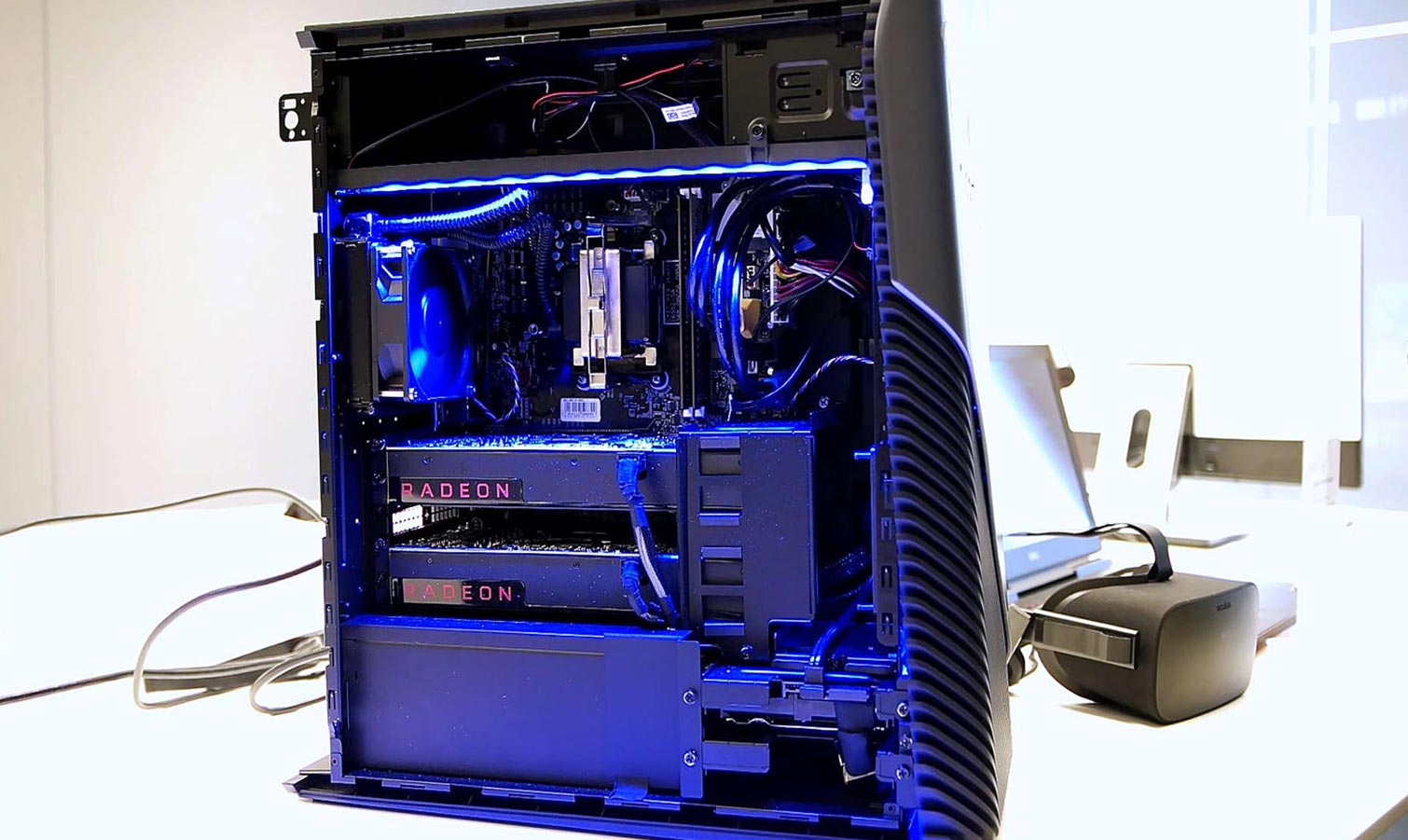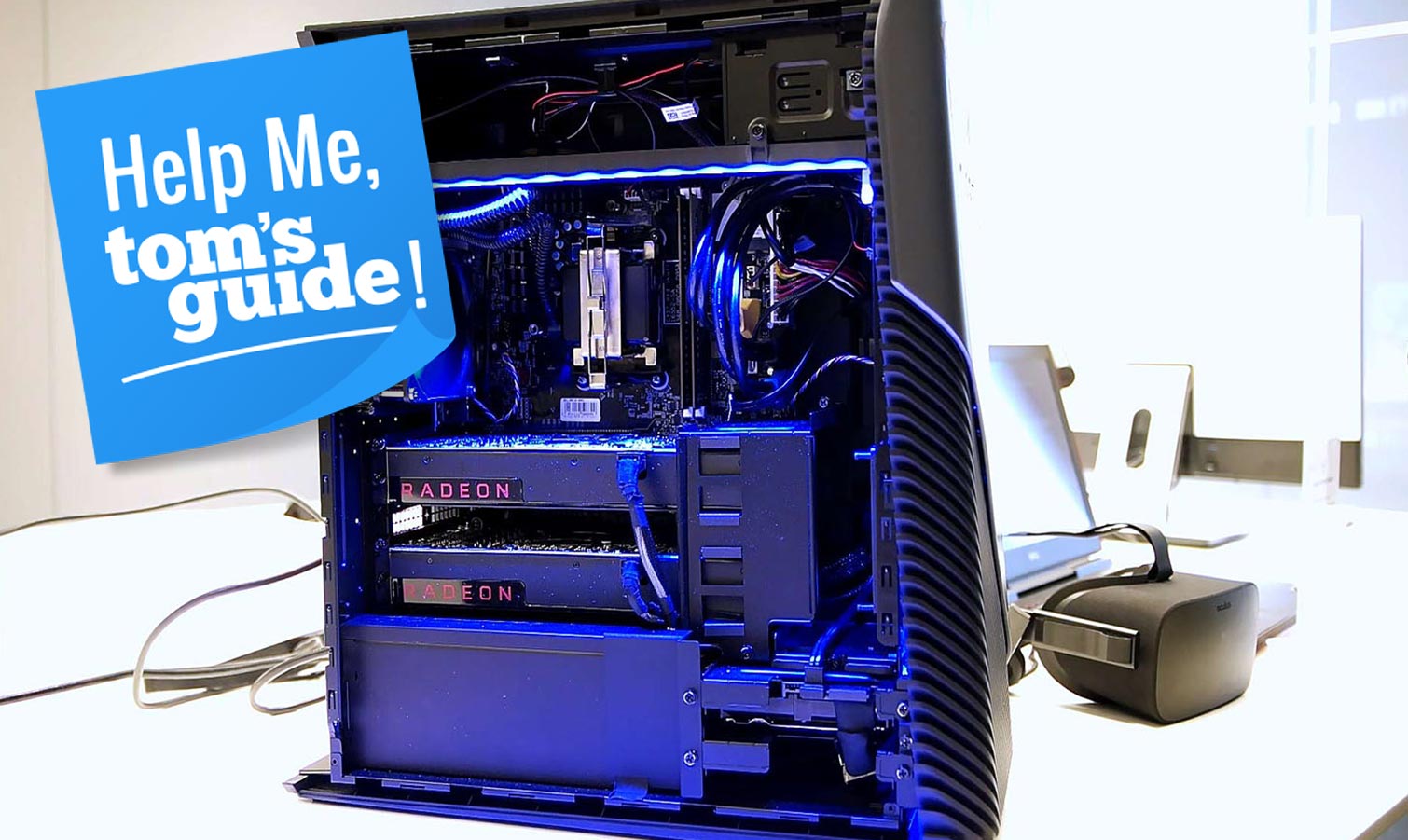Help Me, Tom's Guide: What's a Great VR-Ready PC?
Looking to make the jump to VR? Here are the best PCs to do it with.

If you're a PC gamer looking to dive into virtual reality, there's a good chance you'll need to upgrade or replace your rig. Headsets such as the Oculus Rift and HTC Vive require you to have pretty powerful hardware, and getting VR-ready rarely comes cheap.

Looking for advice on whether he should update or replace his gaming PC, Tom's Guide user Adam_225 writes:
"I have a[n] old PC and want to get it VR-ready, but I'm not really sure if it's worth it or even possible to do. Not sure what info you all need, but here is what I gathered.
Windows 7 Home Premium
Sabertooth 990FX motherboard
AMD Radeon HD 6900 Series
AMD FX(tm)-6100 six-core processor
8GB RAM
64-bit operating system
Corsair TX650 power supply"
Adam is specifically looking to get the HTC Vive, which means he'd have to upgrade both his graphics card and processor in order to meet the VR headset's system requirements.
You can make those upgrades for a decent price; for example, snagging an Intel Core i5-4590 processor and Nvidia GTX 1060 graphics card would get you to the Vive's base recommended requirements for roughly $470. But you shouldn't settle for the bare minimum with virtual reality (after all, a janky VR experience can make you sick). And in this scenario, it might be worth starting fresh with a new VR-ready system that will come future-proofed for years to come.
Our overall favorite VR-ready PC is the Alienware Aurora, which comes in a $1,249 configuration that exceeds the Vive's recommended specs and has the most easily upgradable design of any pre-built desktop out there.
But not everyone can splurge over $1,000 for a gaming desktop, and if you want to get into VR as cost effectively as possible, you should consider an AMD Ryzen-based system. The new Dell Inspiron gaming desktop comes VR-ready for as low as $849 and is upgrade-friendly should you need more power down the line.
If you prefer to pick out each individual part, made-to-order manufacturers such as iBuyPower and CyberPowerPC allow you to build your own VR-ready Ryzen models for less than $1,000. And while those systems will handle VR with their GTX 1060s, we recommend spending the few extra hundred bucks it will cost you to add in a GTX 1070 or 1080 to get the best possible experience.
Finally, if you favor style over upgradability and don't have a strict budget, we recommend the Corsair One ($1,799 starting). It packs some of the most powerful components on the market into a tiny cylinder that can fit into your entertainment area, and it manages to stay whisper quiet throughout gameplay.
Regardless of which of these models you choose, you'll enjoy a significant power bump over the PC you're currently rocking. Most importantly, you won't just have a nice VR rig; you'll also have a great gaming desktop that can handle mainstream titles for years to come.
Sign up to get the BEST of Tom's Guide direct to your inbox.
Get instant access to breaking news, the hottest reviews, great deals and helpful tips.
Mike Andronico is Senior Writer at CNNUnderscored. He was formerly Managing Editor at Tom's Guide, where he wrote extensively on gaming, as well as running the show on the news front. When not at work, you can usually catch him playing Street Fighter, devouring Twitch streams and trying to convince people that Hawkeye is the best Avenger.
-
zthomas If VR is your thing.. personally I think VR is not prime time ready yet.. my pc is more than ready.. but I am not channeling any money for a headset.. hand controllers etc..Reply

